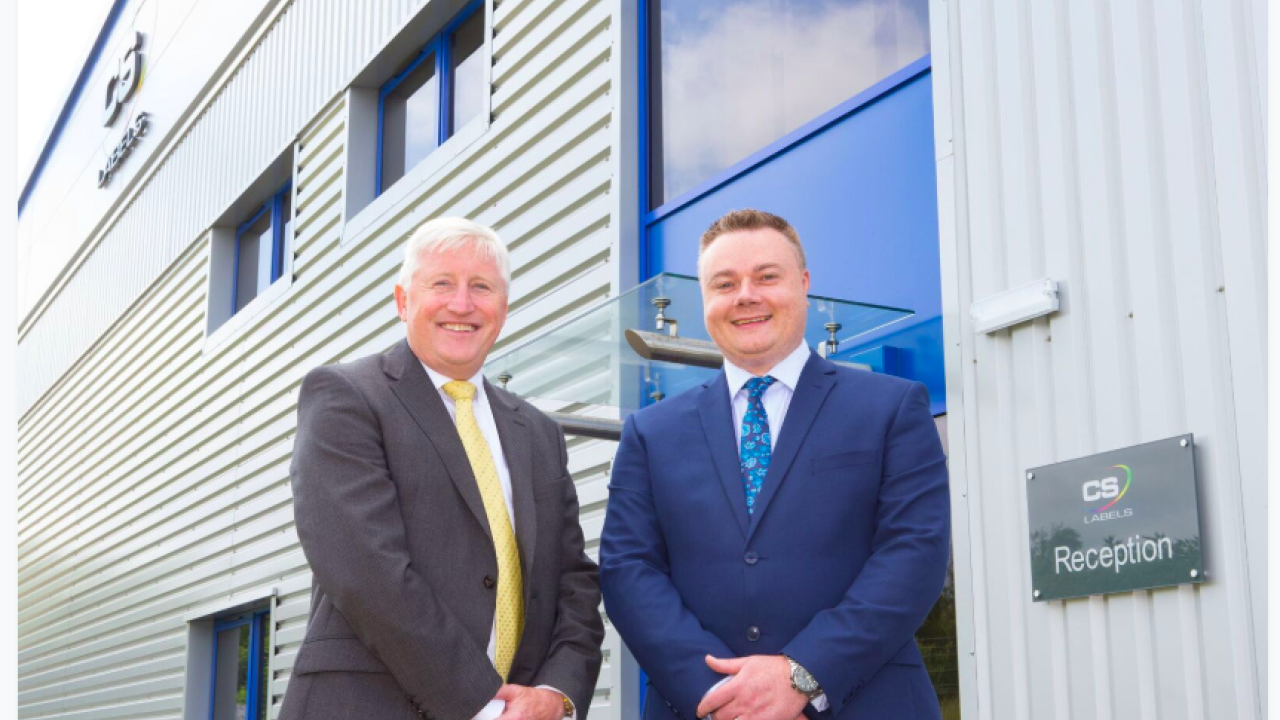CS Labels plots its future

The new 20,000 sq ft factory doubles the Xeikon press user’s available manufacturing space and will enable it to improve productivity, both through equipment utilization and workforce output. Five Xeikon presses – four CX3 engines and a CX500 – have been orientated with the unwind units facing into a central area, for example. This provides a collaborative work environment for press operators. All finishing equipment is positioned off-line to allow maximum utilization of printing capabilities, although one CX3 is fitted with a buffer unit to allow it to handle longer run lengths. Finishing equipment is positioned adjacent to the presses and includes a screen printing unit, Ashe label inspection rewinders and Grafisk Maskinfabrik (GM) lines. One of these is a DC550 converting line for handling wider web widths, while another is a highly specified system for producing peel and reveal labels including an insert unit developed in collaboration between CS Labels and GM.
The physical building features offices that are spacious, comfortable and have aspect windows overlooking the production floor. The factory floor is similarly airy, with heating and lighting designed to foster a productive work environment as well as being highly energy efficient. Outside, a bike store allows employees to cycle to work.
Having only finalized its move in the weeks prior to Labels & Labeling’s visit, the main factory floor offers CS Labels plenty of room to grow and is ready for installation of further equipment. This will include additional digital printing capacity, although the exact nature of this is unknown. Rather the printer is actively engaged with a number of projects that will shape its future growth and product mix. Inkjet is one possibility, as that technology continues to evolve and find new applications.
Simon Smith, managing director at CS Labels, says: ‘Our strategy has always been for the company to evolve every few years, as standing still and just concentrating on trade work or single layer labels means you have to cut margins to protect your market. The investment in this new building has been made with the future in mind and allows us the space and opportunity to grow and expand.’
Innovation in packaging
Innovation is central to CS Labels’ DNA. Take its work in flexible packaging as an example. For some years it has been working to find an option using Xeikon press technology to handle such pack formats and the materials involved. Smith identifies how its flexible packaging offer is now gaining traction, increasingly in non-food markets. A project of note has been for hot tub aromatherapy crystals, with an order of 11,000 pouches across 20 SKUs. ‘Non-food is an enormous market, but it’s the type of job a traditional flexible packaging company wouldn’t want,’ says Smith.
To allow it tap into these markets, CS Labels is enhancing its own production to efficiently produce short runs of flexible packaging. Its old site is now home to its flexible packaging activities, in addition to its wider R&D work. A Xeikon 3500 digital press remains installed there, while the company will soon commission a bespoke pouch making line intended to streamline the production flow in short runs of flexible packaging.
‘A big challenge we have is that we have no control over finishing and are beholden to their production schedules,’ notes Smith. ‘Despite our printing only taking around 10 days, ordering and converting can mean the lead time for flexible packaging can be up to 15 weeks. That is far too long.
‘With our production techniques using the Xeikon print process, solvent-free in-house laminating and new pouch making capability, we can be much more flexible with turnaround times – three to four weeks.’
Innovation in labels
Innovation in labels is also ongoing. One such development has been a project in collaboration with Labelefx, where CS Labels has helped a customer to rethink its self-adhesive label ordering.
The customer required mass price point labeling, bi-annually. This saw orders from several departments from hundreds of stores collated in one file, then passed to the label provider for quote and production. The original process saw the orders printed on separate sheets which contain the same label of the same size. This resulted in a large proportion of waste labels, such as multiple £35 price labels on a sheet where a particular store might only need 50 percent of that sheet. CS Labels’ answer was to combine laser cutting and vectorizer technology, along with software that interprets the master spreadsheet to process the job orders. The system prints a QR barcode into the waste area of the label material when there is a shape or store change. This is then scanned by the GM laser cutter and tells the laser which shape needs to be cut out. Using this technology, CS Labels can quickly print and cut a full range of self-adhesive labels with various designs, shapes and sorts on a single roll of material and then cut this into separate sheets for separate stores. Human intervention at this stage is removed, and the technology accurately does all of the work. The result for the customer was a reduction in the number of labels ordered, from 11 million to around five million.
Another innovation is a new cloud-based PDF workflow system that promises to streamline job generation. Powered by Ayelant’s tFlow, the system creates a collaborative, real-time environment for artwork approval. This allows stakeholders to view, comment on and amend orders. The system automatically takes the sales order and PDF and uses data in them to create order-specific job sheets. It also carries out preflight checks and can correct file issues, such as ensuring the artwork is the right size and in the right color space, correcting bleeds and handling font problems.
These developments will help CS Labels serve a market that ‘will change more over the next three to four years,’ notes Smith. ‘The high street will not be there as it is now as people buy more and more online. The industry needs to be changing its production processes to suit.’
He adds: ‘There are some really interesting things that are being done with digital. We are talking to brands and designers to make sure they understand and can capitalize on the opportunities; to look beyond the unit price, at how you can add value and where the power of digital lies.
‘The industry hasn’t always sold digital very well or its limitations. As such, it hasn’t yet shown its full potential. It has to be about more than digital printing. You need to offer a digital solution. Anyone with a digital press can print a label, it’s about how we differentiate ourselves, and understand the market and applications.’
Stay up to date
Subscribe to the free Label News newsletter and receive the latest content every week. We'll never share your email address.


